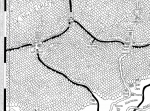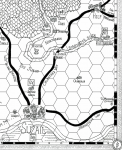XGtE Magic Item Backstories set in Cormyr. Item the Sixth: Cast-Off Armor
OK. Next up, our friend Xanathar has given us Cast-Off Armor, from Xanathar’s Guide to Everything, p.136.
I figure not every item needs a description involving accidental enchantments or temporary inherited traits, so let’s stick with Cormyr lore to inform each magic item's backstory, and use the other stuff when it seems appropriate.
• Wherever warriors wear armor, there comes first the business of putting the armor on, and later taking it off. This takes time.
• Cormyr is no exception. The armorers of the Forest Kingdom are accomplished crafters of leather, cloth, chain and plate, as are the tailors, for whom the task of creating durable, easy to use straps, padding and belts to securely fasten armor to its intended wearer. This has standardized the process, at least for the Purple Dragons, and allows for some interchangeability if a Dragon is in a hurry to get armored up.
• ”Trust your armor. Trust your sword. Save the magic for the wizards.” These words are taught to young Purple Dragons in training.
• Magical Armor—even with minor enchantments—isn’t something most Purple Dragons wear. Officers of the Purple Dragons (Lionars, Onrions, Constals, Overswords, Battlemasters, etc.) might have an enchantment or two on their armor, to ward off magical attacks or allow for brief communication over great distances.
• Even then, the business of donning and doffing armor isn’t something most Dragon officers want given over to the War Wizards and their magic. The time spent donning one’s armor is a moment to reflect, to focus, and to think about the day (or the battle) ahead. It’s a ritual, but requires no magic.
• Armor-wearing adventurers go through a similar ritual. But most of them don’t mind magic. On the contrary, they’ll take whatever magic they can get.
• They like to wallow in the mud like pigs, too. (Really, they do.) Any veteran adventurer will tell you the last thing you want is to be traipsing through a place like the Hullack Forest in armor that’s clean as freshly drawn steel, for your foes will see you coming—even in the middle of night, when a stray moonlight reflection can mean the difference between catching foes like orcs unawares, or catching an orc spear in your throat. Better to be dirty and live another day.
• Now, unless you’ve been trained since childhood to wear armor (like the orphans given over to the Shrine of Swords in Archendale [Tempus]), sleeping in armor can leave an adventurer sore and tired upon awakening. Some adventurers wear their armor anyway, for fear of an ambush.
• There’s an advantage to be had, then, if one’s armor can be donned in an instant. This way an adventurer can sleep more or less comfortably, and call upon their armor should the party be attacked during a rest period.
• There is just such a suit of armor available within Dunshield’s Arms and Armors, based in Arabel, for a small ransom.
• Far cheaper, however, are the three suits of armor (type to be determined by the DM) that work in reverse. These are suits of Cast-Off Armor.
• Auntiver Dunshield, sole proprietor of Dunshield’s, is selling these suits for cut-rate prices: 75 gp each, plus the standard rate for the given armor type. (See the PHB, page 145 for armor prices.)
• Should a buyer be interested in a little headhunting, Auntiver is offering the pick of his arms and armors for the capture and return of the adventurer mage who’d sold Auntiver the four sets of magical armor after claiming all four worked the same.
OK. Next up, our friend Xanathar has given us Cast-Off Armor, from Xanathar’s Guide to Everything, p.136.
I figure not every item needs a description involving accidental enchantments or temporary inherited traits, so let’s stick with Cormyr lore to inform each magic item's backstory, and use the other stuff when it seems appropriate.
• Wherever warriors wear armor, there comes first the business of putting the armor on, and later taking it off. This takes time.
• Cormyr is no exception. The armorers of the Forest Kingdom are accomplished crafters of leather, cloth, chain and plate, as are the tailors, for whom the task of creating durable, easy to use straps, padding and belts to securely fasten armor to its intended wearer. This has standardized the process, at least for the Purple Dragons, and allows for some interchangeability if a Dragon is in a hurry to get armored up.
• ”Trust your armor. Trust your sword. Save the magic for the wizards.” These words are taught to young Purple Dragons in training.
• Magical Armor—even with minor enchantments—isn’t something most Purple Dragons wear. Officers of the Purple Dragons (Lionars, Onrions, Constals, Overswords, Battlemasters, etc.) might have an enchantment or two on their armor, to ward off magical attacks or allow for brief communication over great distances.
• Even then, the business of donning and doffing armor isn’t something most Dragon officers want given over to the War Wizards and their magic. The time spent donning one’s armor is a moment to reflect, to focus, and to think about the day (or the battle) ahead. It’s a ritual, but requires no magic.
• Armor-wearing adventurers go through a similar ritual. But most of them don’t mind magic. On the contrary, they’ll take whatever magic they can get.
• They like to wallow in the mud like pigs, too. (Really, they do.) Any veteran adventurer will tell you the last thing you want is to be traipsing through a place like the Hullack Forest in armor that’s clean as freshly drawn steel, for your foes will see you coming—even in the middle of night, when a stray moonlight reflection can mean the difference between catching foes like orcs unawares, or catching an orc spear in your throat. Better to be dirty and live another day.
• Now, unless you’ve been trained since childhood to wear armor (like the orphans given over to the Shrine of Swords in Archendale [Tempus]), sleeping in armor can leave an adventurer sore and tired upon awakening. Some adventurers wear their armor anyway, for fear of an ambush.
• There’s an advantage to be had, then, if one’s armor can be donned in an instant. This way an adventurer can sleep more or less comfortably, and call upon their armor should the party be attacked during a rest period.
• There is just such a suit of armor available within Dunshield’s Arms and Armors, based in Arabel, for a small ransom.
• Far cheaper, however, are the three suits of armor (type to be determined by the DM) that work in reverse. These are suits of Cast-Off Armor.
• Auntiver Dunshield, sole proprietor of Dunshield’s, is selling these suits for cut-rate prices: 75 gp each, plus the standard rate for the given armor type. (See the PHB, page 145 for armor prices.)
• Should a buyer be interested in a little headhunting, Auntiver is offering the pick of his arms and armors for the capture and return of the adventurer mage who’d sold Auntiver the four sets of magical armor after claiming all four worked the same.
Last edited:






